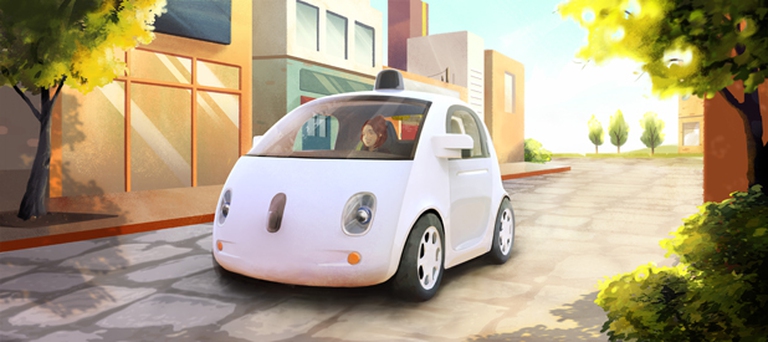
The EU has banned the sale of new petrol and diesel cars and vans from 2035. From then on, new cars and vans sold in the EU must run on other fuels.
After a number of trials and tests on vehicles built by other manufacturers, Google officially started to build its own self-driving car. Electric. The car will seat two people, its nose is fun, almost smiling, and aims to insert itself in the collective imagination as a safe and reliable means of transport. It has
After a number of trials and tests on vehicles built by other manufacturers, Google officially started to build its own self-driving car. Electric.
The car will seat two people, its nose is fun, almost smiling, and aims to insert itself in the collective imagination as a safe and reliable means of transport. It has no controls except for the start/stop button.
The smiling car
According to what the BBC reported, it seems almost a cartoon-like car. It has no traditional bonnet at the front but one purposely designed to increase pedestrians’ safety. It is narrower than common cars and made with a soft material that would reduce the seriousness of accidents. To this effect the speed was limited to 40 km/h.
To drive autonomously it uses a combination of laser and radar sensors along with a camera that collects data. And, inevitably, its computer includes all Google’s maps adapted and tested specifically to provide the vehicle with the complete street network you are travelling. Up to now, self-driving cars have covered a distance of over one million kilometres without any problems.

No controls
Although according to its manufacturers it could become the safest car in circulation, Sven Beiker, executive director of the Centre for automotive research at Stanford, claims that driverless cars should require human inputs in case of emergency.
Google plans to build in Detroit, United States, a fleet of 200 cars within a year, revolutionising the transport sector with safer streets, no accidents and reducing traffic and pollution.
Siamo anche su WhatsApp. Segui il canale ufficiale LifeGate per restare aggiornata, aggiornato sulle ultime notizie e sulle nostre attività.
![]()
Quest'opera è distribuita con Licenza Creative Commons Attribuzione - Non commerciale - Non opere derivate 4.0 Internazionale.
The EU has banned the sale of new petrol and diesel cars and vans from 2035. From then on, new cars and vans sold in the EU must run on other fuels.
Lewis Hamilton, seven-time world champion and first-ever black Formula 1 driver, has devoted himself to human and animal rights, and the environment.
Milan has announced one of Europe’s most ambitious mobility schemes, known as Strade Aperte (open roads). Its goal is to reduce cars in phase 2 of the lockdown by increasing bike lanes and pedestrian areas.
Honolulu has become the largest US city to make looking at phones illegal while crossing the road. The safety issue linked to handheld devices is gaining importance as accidents increase.
On 23 October in Paris the mayors of London, Paris, Los Angeles, Copenhagen, Barcelona, Quito, Vancouver, Mexico City, Milan, Seattle, Auckland, and Cape Town committed to a series of ambitious targets to make their cities greener, healthier and more prosperous. By signing the C40 Fossil-Fuel-Free Streets Declaration, the pioneering city leaders pledged to procure only
Theresa May has been British Prime Minister for seven months, coming to power in the wake of the Brexit referendum and David Cameron‘s resignation. Her main task as leader is that of defining the United Kingdom’s exit from the European Union in conformity with the desires of the 52 per cent of voters who chose to back Brexit.
Just as fires often give way to new growth, after the Dieselgate scandal, which saw Volkswagen cheating on US emission rules, the German car manufacturer radically changed course, beginning to focus on sustainable mobility. The German car company aims to propose thirty zero-emission models and produce at least one million battery electric vehicles by 2025. An ambitious mission
Hundreds of doctors, health professionals and medical students launched Doctors Against Diesel, a campaign calling for London mayor Sadiq Khan to phase out diesel vehicles in the city by 2025, on the 10th of December. The movement started shortly after the mayors of four major global cities – Paris, Mexico City, Madrid and Athens – announced they will stop using
Sustainable, two-wheel mobility is triumphing in Copenhagen. After years of investments, policies, and infrastructural changes, bikes now outnumber cars in the city centre. The website Copenhagenize has released data linked to the number of vehicles entering the city centre, which are monitored by the city’s administration on a daily basis. Last year, 265,700 bikes have entered







